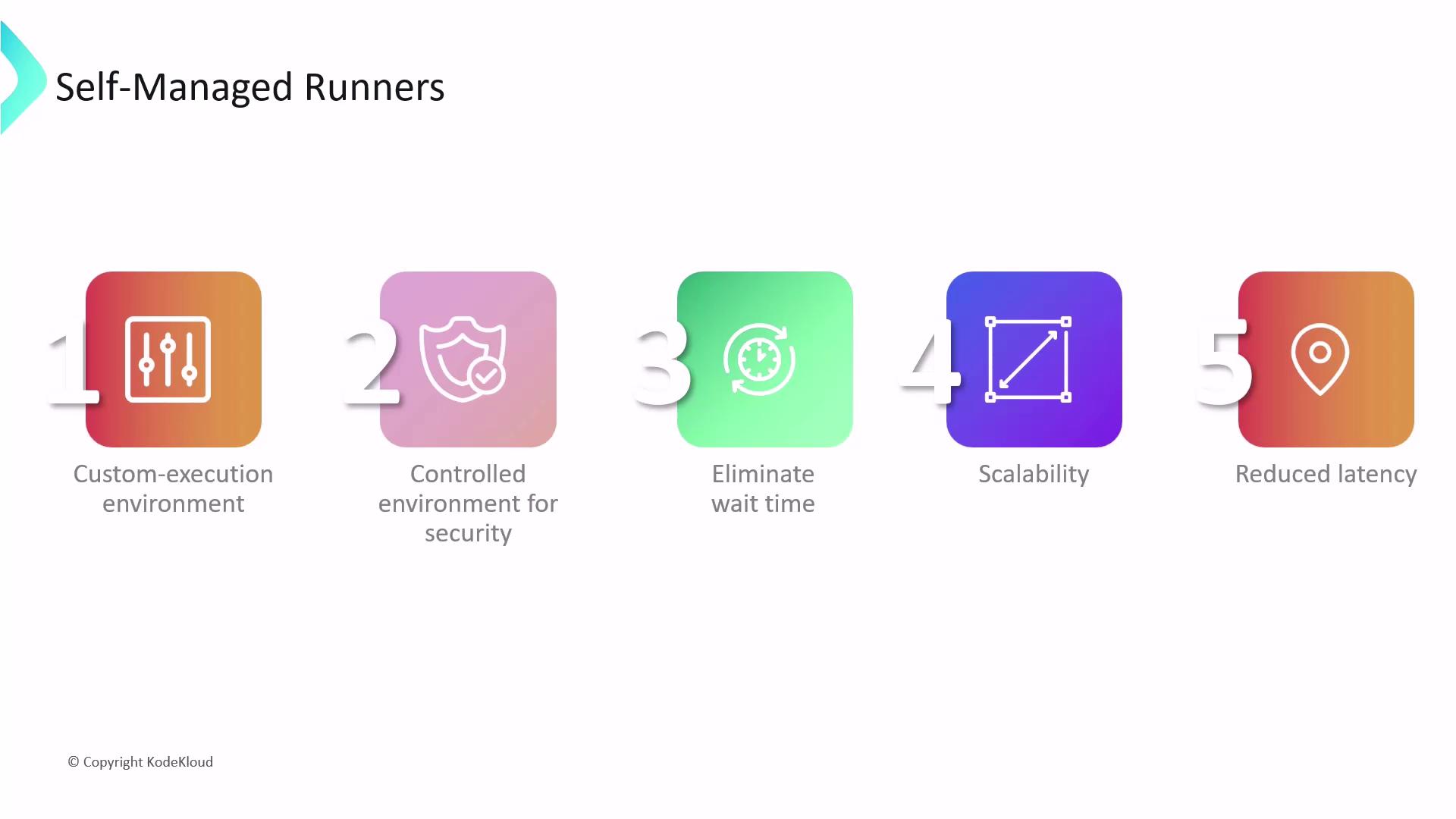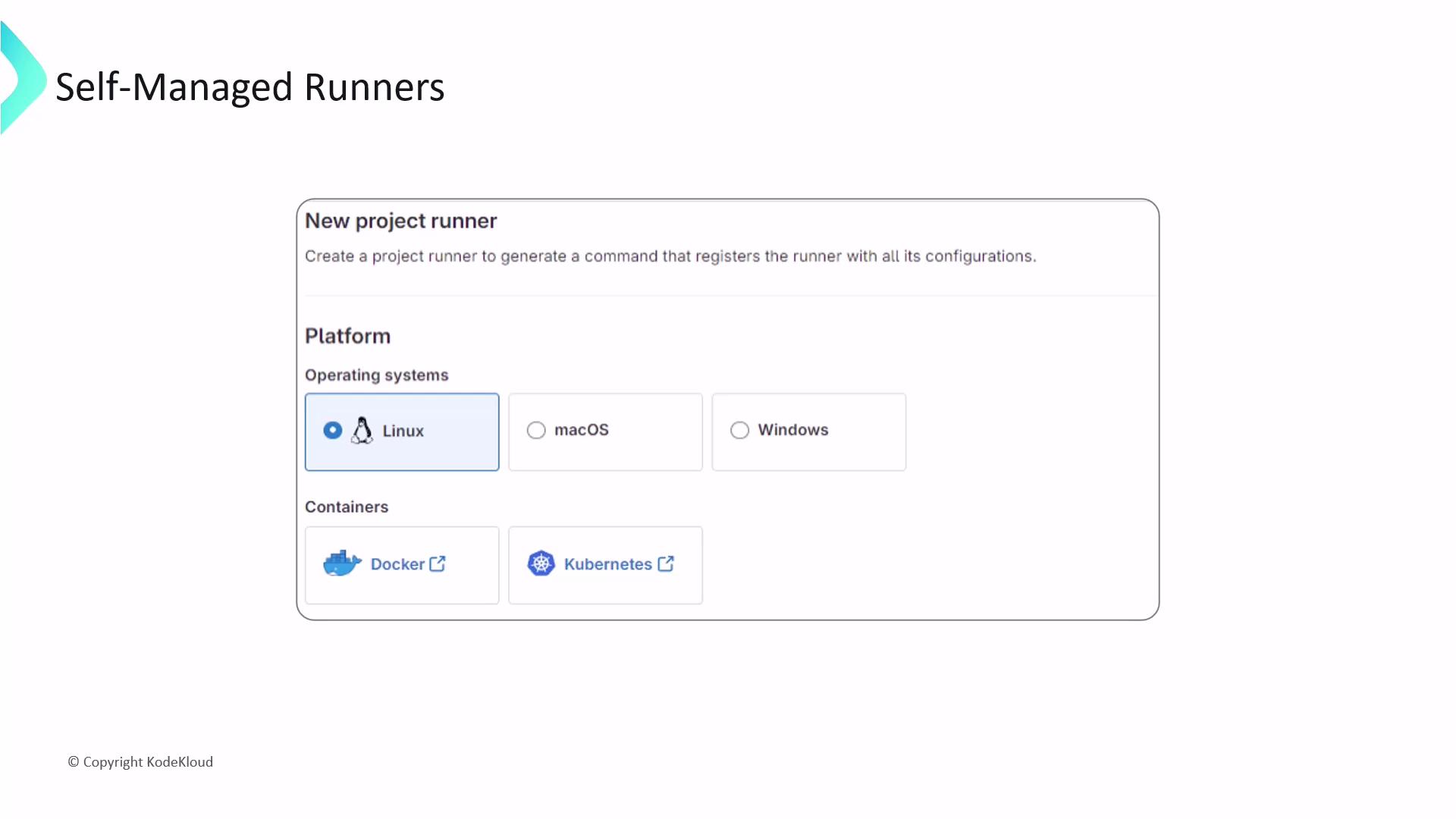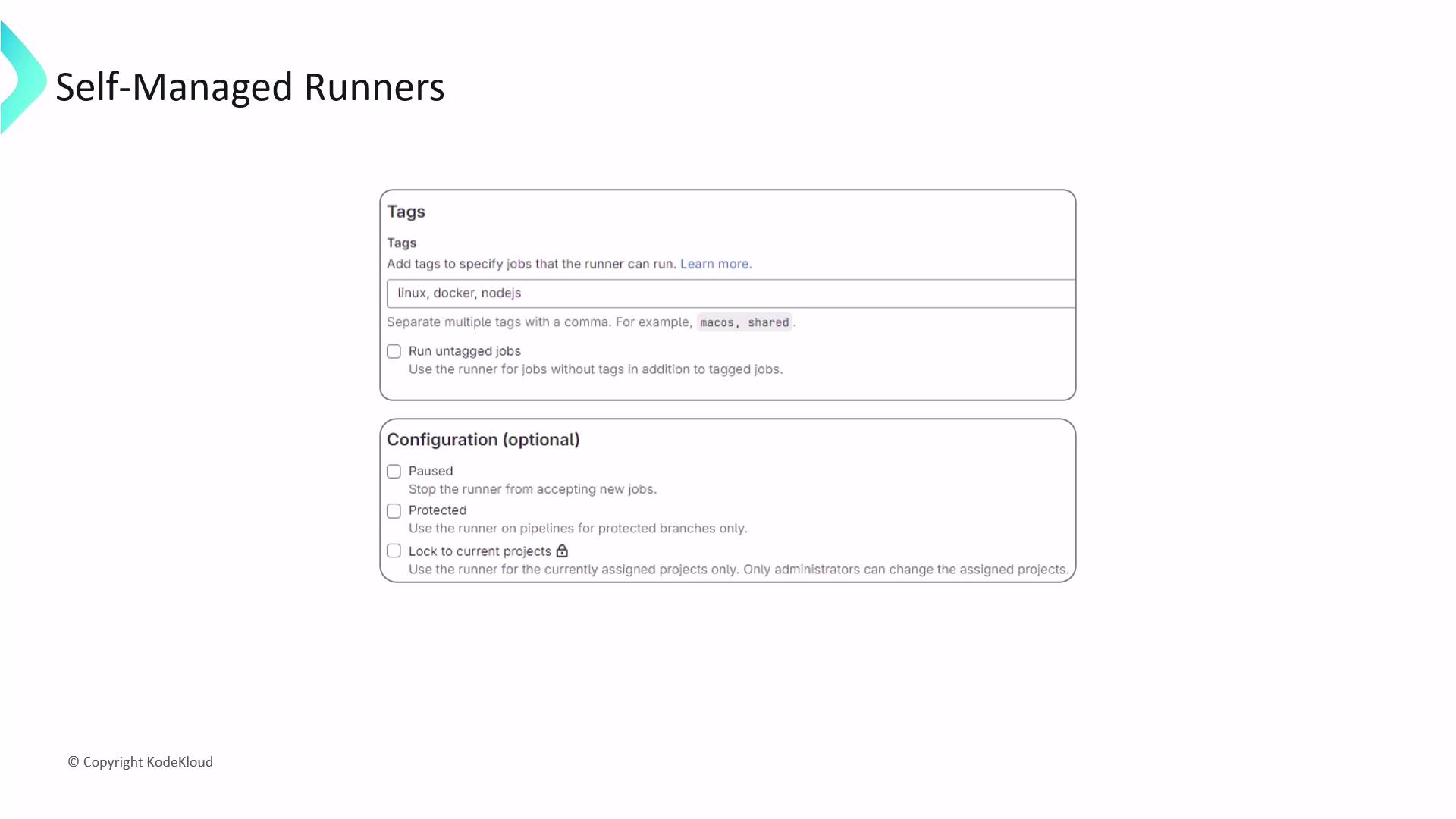GitLab CI/CD: Architecting, Deploying, and Optimizing Pipelines
Self Managed Runners
Self Managed Runners
Runners are virtual machines that execute jobs in a GitLab CI/CD pipeline. They clone your repository, install dependencies, and run your build, test, and deploy commands. While GitLab.com offers hosted SAST runners out of the box, self-managed runners let you deploy and control your own infrastructure.
Note
GitLab’s shared hosted runners spin up fresh VMs on Linux, Windows, macOS, or GPU-enabled instances with zero configuration.
Self-managed runners provide:
- Fully customizable execution environments (OS, tools, libraries).
- Dedicated capacity with no queue delays.
- Horizontal scaling for parallel workflows.
- Geographic placement for low latency and data residency.
- Enforced security and compliance controls.

While GitLab-hosted runners are easy to start, self-managed runners give you full control over performance, security, and cost.
Runner Scopes
You can register self-managed runners at three levels:
| Scope | Availability | Use Case | Registration Location |
|---|---|---|---|
| Shared runner | All groups and projects | General-purpose CI/CD workloads | Admin Area > CI/CD > Runners |
| Group runner | All projects in a specific group | Team-based resource sharing | Group Settings > CI/CD > Runners |
| Project runner | A single project | Project-specific pipelines | Project Settings > CI/CD > Runners |
![]()
Project-Level Runner Setup
To register a runner for one project:
- Navigate to Settings > CI/CD in your project.
- Under Runners, optionally disable any existing shared runners.
- Click Expand next to Set up a specific Runner manually, then select New project runner.

During setup you can:
- Choose OS and architecture (Linux, Windows, macOS).
- Add tags to route jobs (
docker,linux,nodejs). - Enable Run untagged jobs for broader job assignment.
- Configure protection, pausing, and other advanced options.

Click Create runner to generate your registration token and get platform-specific installation steps.
Installing GitLab Runner
Install the GitLab Runner binary on your host before registering:
# 1. Download the Linux AMD64 binary
sudo curl -L "https://gitlab-runner-downloads.s3.amazonaws.com/latest/binaries/gitlab-runner-linux-amd64" \
-o /usr/local/bin/gitlab-runner
# 2. Make it executable
sudo chmod +x /usr/local/bin/gitlab-runner
# 3. Create a dedicated service user
sudo useradd --comment 'GitLab Runner' --create-home gitlab-runner --shell /bin/bash
# 4. Install and start as a system service
sudo gitlab-runner install --user=gitlab-runner --working-directory=/home/gitlab-runner
sudo gitlab-runner start
Warning
Ensure /usr/local/bin/gitlab-runner has correct ownership and permissions to prevent privilege escalation.
Registering the Runner
Run the interactive registration command:
sudo gitlab-runner register \
--url "https://gitlab.com/" \
--registration-token "GLRT-xxxxxxxxxxxxxxxxxxxx"
You’ll be prompted for:
- Runner name (e.g.,
ci-nodejs-linux). - Executor (
shell,docker,kubernetes). - Additional settings: default Docker image, tags, locked/unlocked status.
Successful registration writes all details to /etc/gitlab-runner/config.toml.
Warning
Keep your registration token secret. Do not commit it to source control or share publicly.
Customizing config.toml
Open /etc/gitlab-runner/config.toml to tailor your runner:
nameandtagsfor job routing.executorblock to configure Docker images, volumes, and networks.- Resource limits:
cpu,memory, and disk quotas. - Environment variables (
[[runners.environment]]). - Cache and artifact paths for faster CI/CD runs.
Using Tags in .gitlab-ci.yml
Target specific runners by matching tags:
workflow:
name: Self-Managed Runner Tags
unit_tests:
stage: test
tags:
- docker
- nodejs
- linux
script:
- npm install
- npm test
Return to Settings > CI/CD in your project to monitor runner status, job history, and registered tags.
Links and References
Watch Video
Watch video content